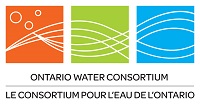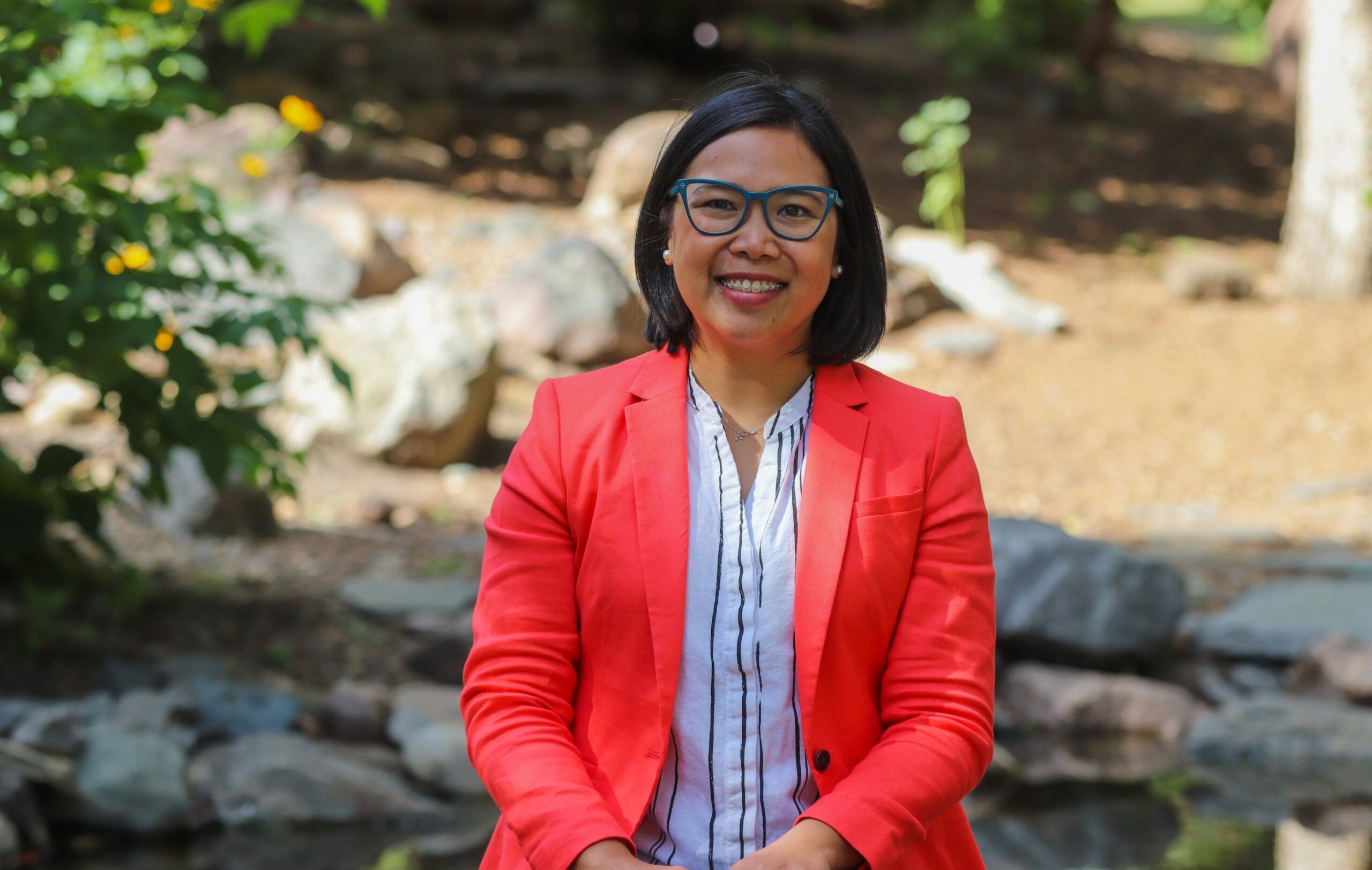After nearly a decade away, Dr. Maricor Arlos returned to the University of Waterloo in 2024, not to retrace her steps but to reshape the path forward. A Waterloo graduate three times over, Arlos had spent years conducting research in Switzerland and Alberta, gaining a sharper, more global perspective on water management, stakeholder priorities, and the complex role of contaminants in the environment.
Now, as Assistant Professor of Civil and Environmental Engineering, and head of the Arlos Research Lab, she’s bringing those experiences home to lead a growing research program focused on micropollutants: traces of pharmaceuticals, personal care products, hormones, and industrial chemicals that move through our wastewater and aquatic systems, largely invisible but with real ecological and health implications.
“My work is really about tracing how these substances behave across the urban water cycle,” says Arlos. “How they’re introduced, where they accumulate, and how we can remove them in ways that are both effective and sustainable.”
Her research is built on three intersecting pillars: exposure science and contaminant fate, low-carbon treatment technologies, and collaborative knowledge development with communities and end users. That integration is deliberate. For Arlos, meaningful water research doesn’t happen in isolation. It needs to answer questions that utilities, municipalities, and communities are actively asking.
Her time outside Ontario sharpened that outlook. “In Alberta, I worked with oil sands stakeholders and agricultural producers, very different priorities than I’d encountered in Ontario,” she says. “In Switzerland, I saw a much higher willingness to invest in emerging treatment technologies. What became clear was that water challenges are always context-specific. But the tools we use can be adapted, if we take the time to listen.”
Listening has become a cornerstone of her lab’s approach. In Alberta, she partnered with a land developer near Edmonton who chose not to destroy a natural wetland, despite having regulatory approval to do so, and instead asked: what would it take to retain it and build around it? Arlos and her team are now studying how that wetland could continue to function for stormwater treatment in a growing subdivision, offering a potential model for low-impact development.
She’s also leading a pilot with small-scale dairy producers in Alberta to polish wastewater from on-farm lagoons using constructed wetlands, enabling water reuse for irrigation. That work is informed by rising drought risks and the increasing need to recirculate water within agricultural systems.
At the same time, she’s tackling industrial waste streams. Working with industry partners, Arlos is testing how bauxite residue, a byproduct of aluminum production, can be repurposed as a sorbent to remove contaminants from wastewater. Her team recently published findings showing early promise, adding a circular economy dimension to the lab’s research.
“These are low-energy, low-cost approaches that can be adapted for rural systems, small municipalities, even industrial reuse,” she says. “But they only matter if they can be scaled and accepted. That means engaging early with the people who would actually use them.”
That’s where her collaboration with the Ontario Water Consortium (OWC) has been especially valuable. As a sector support organization, OWC helps align research with real-world needs by connecting researchers like Arlos to municipal utilities, technology firms, and policy advocates across Ontario.
“After years in Alberta, reconnecting with Ontario’s priorities was a must,” Arlos says. “OWC plays a key role in making that happen. They help researchers understand what challenges are top-of-mind in Ontario and link us with stakeholders who are ready to collaborate.”
She also works with municipalities and water utilities to co-develop monitoring frameworks and predictive models. Her lab is incorporating machine learning into fate and transport modeling to better anticipate contaminant flows based on land use, water consumption, and demographic data. That predictive capability can help utilities optimize infrastructure planning and treatment investment, especially for hard-to-treat compounds like micropollutants.
Innovation in the lab is driven not just by faculty, but by her students. “I see my students as co-creators in this work,” she says. “They’re developing new analytical methods, building models, and asking hard questions. Mentorship is a huge part of why I’m here.”
That mindset is rooted in her own training. Arlos was part of the first cohort of Waterloo’s Collaborative Water Program, which blends technical, ecological, and social dimensions of water research. Now, she’s come full circle as the first graduate of the program to return as a professor. Her lab builds on that legacy by training students with a “T-shaped” profile: deep technical expertise in modeling or chemistry, plus broad fluency in interdisciplinary thinking and stakeholder engagement.
As her lab grows, so does its ambition. A new direction involves studying bioaccumulation of micropollutants in aquatic organisms, moving beyond detection in water to tracking their effects in fish, insects, and food chains. It’s part of a broader effort to link monitoring with ecological risk, regulation, and communication.
She’s also beginning to work with underrepresented and Indigenous communities, many of whom still face water insecurity, not due to lack of technology but systemic failures.
“There are communities in Canada that have been denied access to clean water for years. That’s not a technical challenge, it’s a social justice issue,” Arlos says. “But we can’t come in with assumptions. We have to build trust first. That’s how I approach all partnerships, with humility and a willingness to learn.”
Asked what kind of impact she hopes to make, she doesn’t point to a specific policy or product. Instead, she talks about shifting mindsets.
“If I can influence how we think about contaminants, how we manage them, how we prioritize treatment, how we define risk, then I’ve done my job. Water is not just a utility service. It’s a shared, essential resource. And it deserves smarter stewardship.”
From international case studies to local pilot projects, Dr. Arlos is helping Canada reimagine how we study, manage, and protect its most vital resource, one compound, one partnership, and one watershed at a time.
Join the Conversation
Dr. Arlos is actively seeking collaborations with industry partners, government agencies, and fellow researchers. If you are interested in partnering or learning more about her research, reach out through the Ontario Water Consortium or University of Waterloo.


